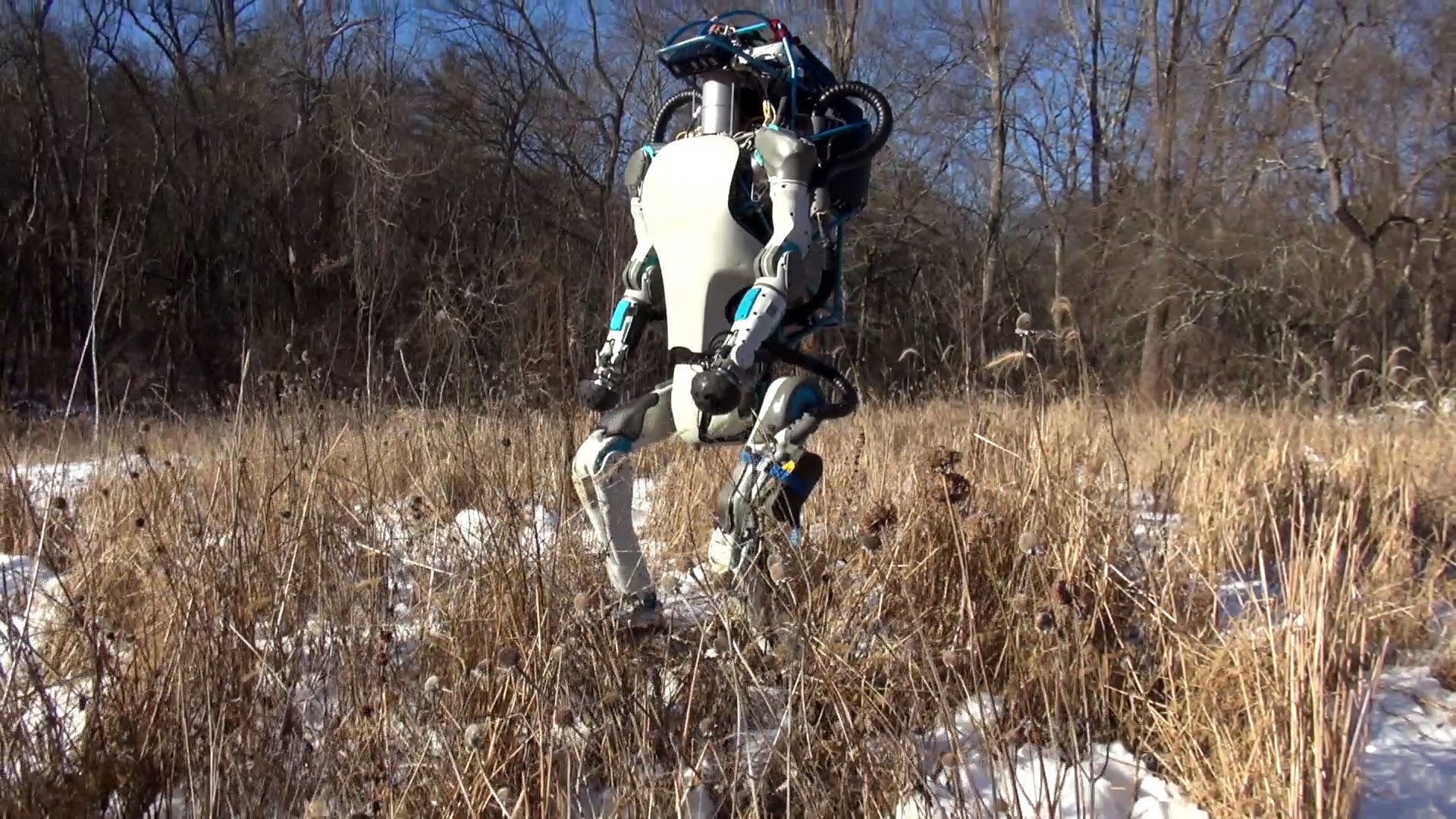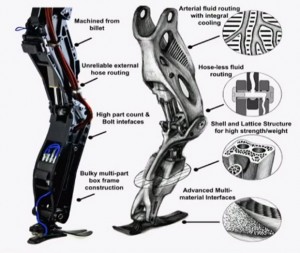I’m sure by now you’ve all seen the video of that Boston Dynamics ATLAS robot being knocked down by an engineer (a video that will, no doubt, come back to haunt us when the robots finally rise up and overthrow their human masters).
What you probably couldn’t tell from the video is that the company leveraged 3D printing to help create its incredibly advanced humanoid robot.
Marc Raibert, founder and president of Boston Dynamics, described their use of the technology in an interview with IEEE Spectrum: “One thing we did was use 3D printing to create the legs, so the actuators and hydraulic lines are embedded in the structure, rather than made out of separate components. We also developed custom servo-valves that are significantly smaller and lighter (and work better) than the aerospace versions we had been using.”
In a presentation at the FAB 11 Conference at MIT last year, Raibert previously hinted at an additively manufactured robot leg with the hydraulics printed directly into the structure.
“I can’t show you the robot yet, but we’re pursuing this pretty aggressively, and I think by the end of the year, you’ll see robots from us that use an approach of fabrication that’s more like that,” he said at the time.
The Italian Institute of Technology and Moog have also created a robotics lab focused on actuation and control technologies for robots that will use 3D printing to create integrated hydraulic actuators for its HyQ2Max robot. Specifically: “Metal additive manufacturing technologies for titanium and aluminum will be core to the newly developed actuation systems and robots. The past research collaboration between Moog and IIT has so far resulted in a family of highly-integrated smart servo-actuator for legged robots,” a company press release notes.
Below you'll find a video of the ATLAS robot.
Source: IEEE Spectrum
About the Author
Follow Robotics 24/7 on Linkedin
Article topics
Email Sign Up


















